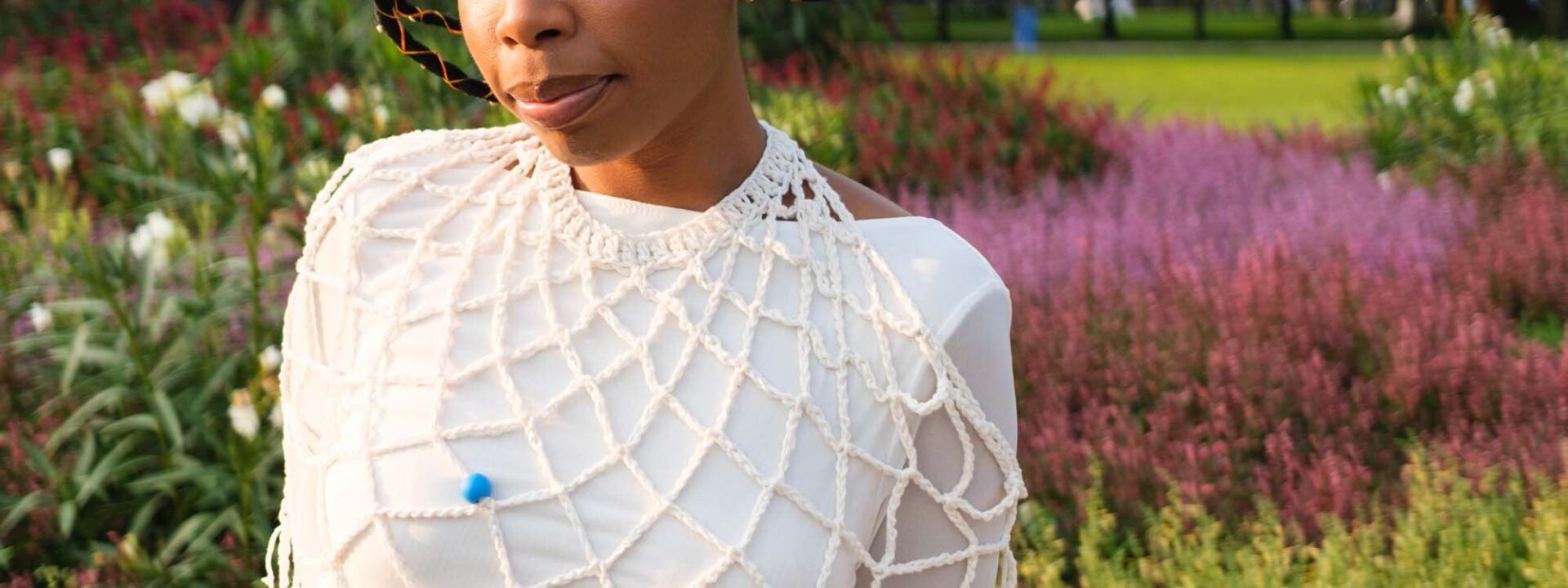As they say, nothing compares to summer in Chicago.
On a cool August evening, the city sparkled with sequins, silks, and legacy. The community came together on the lawn of the DuSable Black History Museum and Education Center—one of the nation’s oldest African American museums—for Mahogany at 50, a celebration of the 1975 fashion classic Mahogany, starring Diana Ross. But this wasn’t just a movie screening. It was a homecoming—a return to the city where it all began, blending cinema, style, and culture. Part outdoor film night, part block party, part runway show.
Organized by Dr. Rikki Byrd, Jessica Clark, and Ci Phillips, Mahogany at 50 honored the film’s lasting impact on fashion, politics, community, and Black womanhood—and, most importantly, Chicago’s beauty and influence. “This was our love letter to Chicago,” Byrd told Vogue. “We wanted to bring the film back to where it was set, where it started—and we did. It was beautiful to see the city come out in their best looks, celebrating and feeling loved.”
Few films have left such a mark on fashion as Mahogany. Directed by Berry Gordy, with a soaring Diana Ross soundtrack and stunning costumes, the film follows Tracy Chambers—a South Side retail assistant and aspiring designer who leaves Chicago to become a supermodel in Rome. It’s high drama, high camp, and high fashion, a visual feast of bold silhouettes and vibrant gowns. And Mahogany at 50 captured that same energy.
The crowd arrived dressed to impress, embracing the film’s signature ’70s glamour. Think crochet dresses, chiffon shawls in pastel hues, berets, voluminous afros, mixed prints, Studio 54-style jumpsuits, and men channeling Barkley Hendricks paintings. Accessories were everywhere—gold chains, turquoise rings, stacks of bangles. Some wore vintage ’70s looks, while others offered modern twists, from Afrofuturism-inspired outfits to direct tributes to Diana Ross’s iconic costumes.
The screening drew a lively, multigenerational crowd. Kids zipped around on scooters, while newcomers experienced Mahogany for the first time. Among the guests were Maurice and Hope Moore, celebrating their 27th (mahogany) wedding anniversary. For others, the night brought back memories of the film’s original Chicago shoot.
Tanya Hackney, a lifelong Chicagoan, was a teenager when she saw Ross filming near her uncle’s house. “He called my mom and said, ‘Tell her to come down here—that lady is walking through the alley shooting a movie,’” she recalled. “We stood there for hours watching. It was amazing.”
Cori Hinton had a similar memory: “I was driving home and saw cameras. I stopped to check it out—it was the scene where Diana says goodbye to Billy Dee.”
Decades later, Black women still see themselves in Tracy. Phillips, who grew up in Chicago’s Stateway Gardens, reflected on that connection. “I meet so many girls like Tracy here—whether they’re modeling, doing events, or makeup—they want it so badly. For Black women, stepping into creative power takes courage. Watching Mahogany affirms that journey.”
Fashion, always central to the film, took center stage with a dazzling live runway show in the spirit of Ebony magazine’s legendary fashion spreads.Fashion Fair.
MC Danny Dunson, curator and Director of Curatorial Services at The DuSable Black History Museum, introduced the looks with the flair of a 1970s runway host as guests danced to classics like Love Hangover and Got To Give It Up.
Clark reflected on her personal connection to Tracy’s story and what it meant to bring this event home. “I’m from the South Side, lived in Paris for a year, and now I’m back,” she told Vogue. “Like Tracy, I’m finding success here. It’s powerful to know I don’t have to leave Chicago to make my mark.”
The night was a celebration for all the senses. Guests took home gift bags filled with beauty products from Pattern Beauty, Luster, and Hanahana Beauty, danced to house, disco, and soul music, and enjoyed Chicago favorites like Harold’s Chicken and Eli’s Cheesecake. Commemorative Mahogany at 50 cyanotype prints and blankets added a special touch.
The evening closed with a moving appearance by Pemon Rami, a longtime cultural organizer and casting associate who had a small role in the original film. Honored before the screening for his decades of impact in Chicago, Rami became a living link between the film’s legacy and the community celebrating it.
From the streets of Cottage Grove to the lawn of The DuSable, Mahogany has always been Chicago’s. Fifty years later, the film still inspires dreamers, designers, and daughters of the South Side.
(Photographed by Adrian Octavius Walker)
